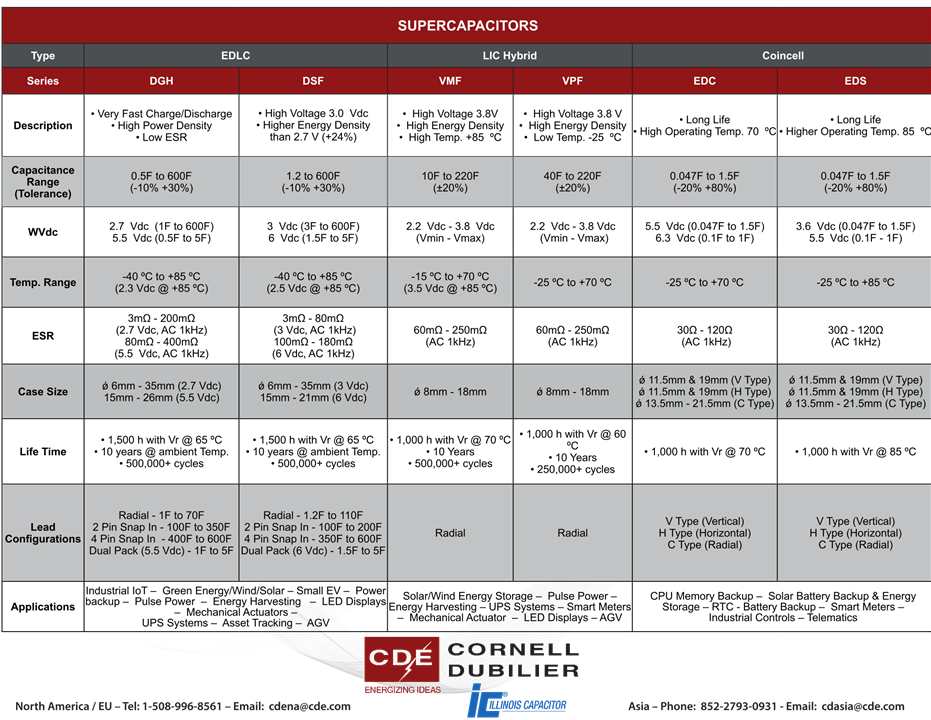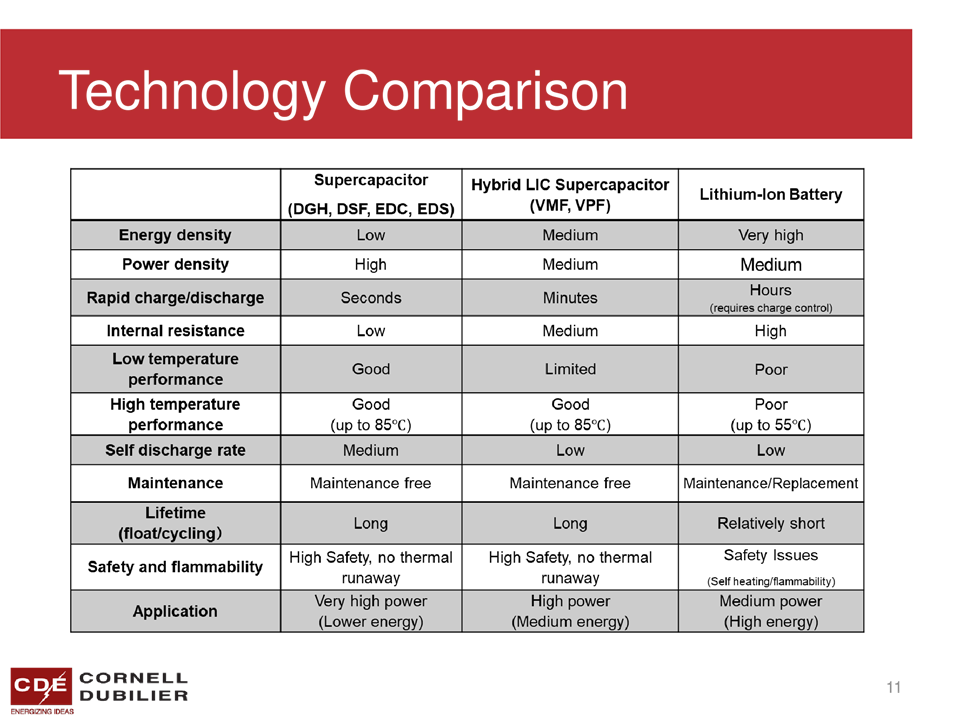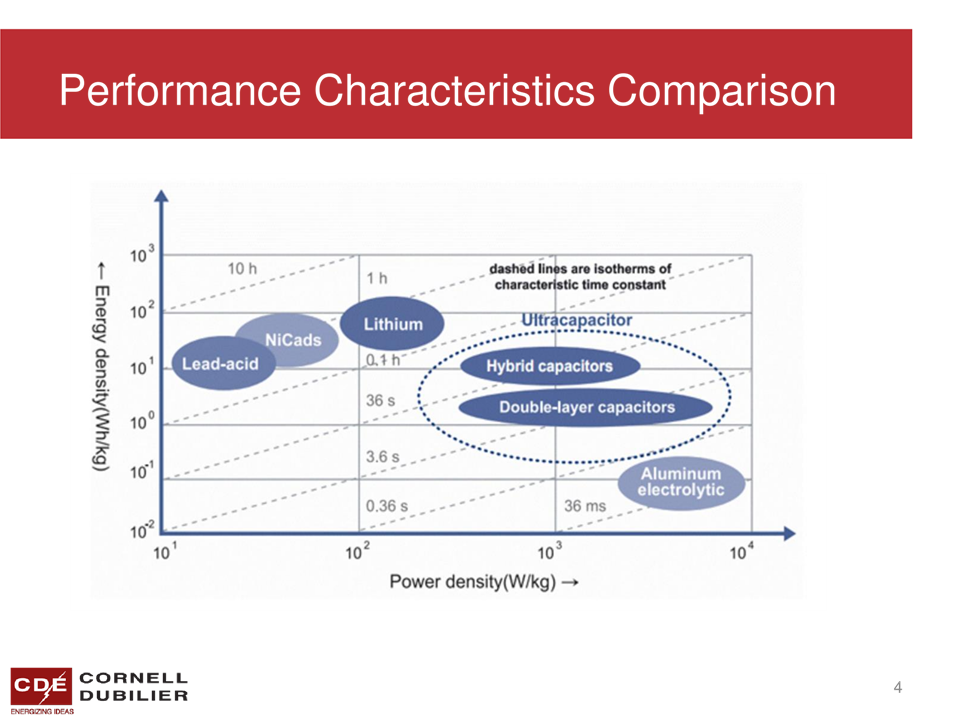Introduction
The element14 introductory text describing this design challenge, noted that: “Supercapacitors are ideal for applications ranging from wind turbines and mass transit to hybrid / EV vehicles, consumer electronics, energy harvesting devices, and industrial equipment… and supercapacitors can cost-effectively supplement and extend battery life, or in some cases, replace batteries altogether.“
This indicates a broad range of possibilities, whereas I have a specific set of requirements. So I’ve been pondering for some time now over how best to test my array of SuperCapacitors to determine which one or ones will be most suitable for my desired application.
Not having any prior experience using the Cornell Dubilier supercapacitors provided, or having any familiarity with the product specs, I have relied totally on the Cornell Dubilier datasheets provided.
I started with the short one page PDF document (also shown in table below), which provides nice handy comparison:

Based on the descriptions given for each category, the DGH series (EDLC type) looked to be the ones that I should use for my application as I wanted a very fast discharge rate for my LED flash.
Within our kit we were provided with 3 x DGH type supercapacitors:
- DGH105Q2R7: 1F 2.7 V
- DGH505Q2R7: 5F 2.7V
- DGH106Q2R7: 10F 2.7V
However, experience has proven that descriptions can be quite subjective, so more reading was required on my part. To this end, there were two other documents that I found quite useful, namely:
- General Supercapacitor Presentation (20210105_CDE-Supercap-Technical_Presentation.pdf)
- and the Supercapacitor Technical Guide (Supercapacitor-Technical-Guide.pdf)
Within the General Supercapacitor presentation, a technology comparison table is provided whereby it seems that a distinction can be made between Hybrid LIC Supercapacitors and the standard type based on Energy and Power density.

This table suggested that I should also include the DSF capacitors, as part of my short list. These look very similar to the DGH series but have a slightly higher max voltage.
We were provided with 3 x DSF type supercapacitors:
- DSF305Q3R0: 3F 3V
- DSF705Q3R0: 7F 3V
- DSF256Q3R0: 10F 3V
But was I jumping the gun here?
I needed a sense check on how my shortlist stacked up against other capacitors. For this another handy chart was provided, namely a comparison of Performance Characteristics:

Here it shows that hybrid capacitors have higher energy density but double-layer supercapacitors can have higher power density, although, interestingly, not as much power density as Aluminium electrolytic capacitors.
So I think I've made the right choice.
Fortunately, I have further help by way of the Cornell Dubilier's SuperCapacitor Technical Guide document. This includes a section on page 5 named “Determining the correct Supercapacitor for the application”.
Here the document describes that my key application design factors should include:
- the maximum and minimum operating voltage of the application,
- the average current or power,
- the peak current or power,
- the operating environment temperature,
- the run time required for the application,
- and the required life of the application.
So, using this as my guide, I could now look at various LED options for my flash design.
LED Options
As we all probably know, there are a couple of key parameters related to LED’s that will make a difference to the outcome of the design such as forward voltage, forward current, power dissipation, luminous intensity, viewing angle etc.
Forward voltage actually becomes an interesting LED design parameter because the max voltage of a single supercapacitor is quite low.
My assumption was to use a single supercapacitor per LED or a single supercapacitor per multiple LED’s in parallel. So taking this assumption, I discovered that this actually limits my options:
The DGH supercapacitors provided in the kit all had a maximum voltage of 2.7V. Using this as my search criteria for forward voltage I was just limited to very few LED’s:
In fact the RoHM Semiconductor CSL1501RT1 Near-Infrared(NI) LED was probably the only viable option I found:
- Max 1.8V forward voltage (typical 1.5V)
- 100mW power dissipation,
- 50mA forward current,
- Max 3.4mW/sr Radiant Intensity (typical 2.5mW/sr)
Interestingly, the CSL1501RT1 comes in a 0402 package, so potentially you could pack multiple LED’s closely together to provide higher intensity but this adds in a few design challenges of its own.
There were quite a few white LED’s available online that had a minimum forward voltage of 2.5V but I felt that this was too close to the max voltage of the DGH supercapacitor.
So, I was going to rule these out, but then a clever member of the element14 community has a website (https://www.baldengineer.com/led-basics.html) that provided me with an interesting observation: The forward voltage defines the amount of voltage required for the current to flow through the diode junction. Any voltages below this level cause the LED to remain “open” or non-conductive.
As such, it may well prove that I could use this rule to deliver my LED flash. Doing a rough calculation based on a typical video frame rate of 30fps, I would only need the LED to be illuminated for say roughly 168 milliseconds to capture 5 still images, or less if I could get away with fewer images.
It will certainly be worth testing what the voltage drop will be on my 3 DGH supercapacitors after 168 milliseconds based on different current flows.
The DSF supercapacitors provided, on the other hand, all have a maximum voltage of 3V. As such, I get much more choice of LED’s and thus can play with other parameters to choose the best option.
For a spot flashlight, I will ultimately need plenty of lums (or Luminous Flux). Fortunately, there’s a linear relationship, i.e. a 20W LED floodlight provides twice as much luminous flux as a 10W LED floodlight etc. So I can therefore test with smaller LED’s on the basis of scaling up later.
Linked to this is of course forward current, but more on that later in the next blog.
